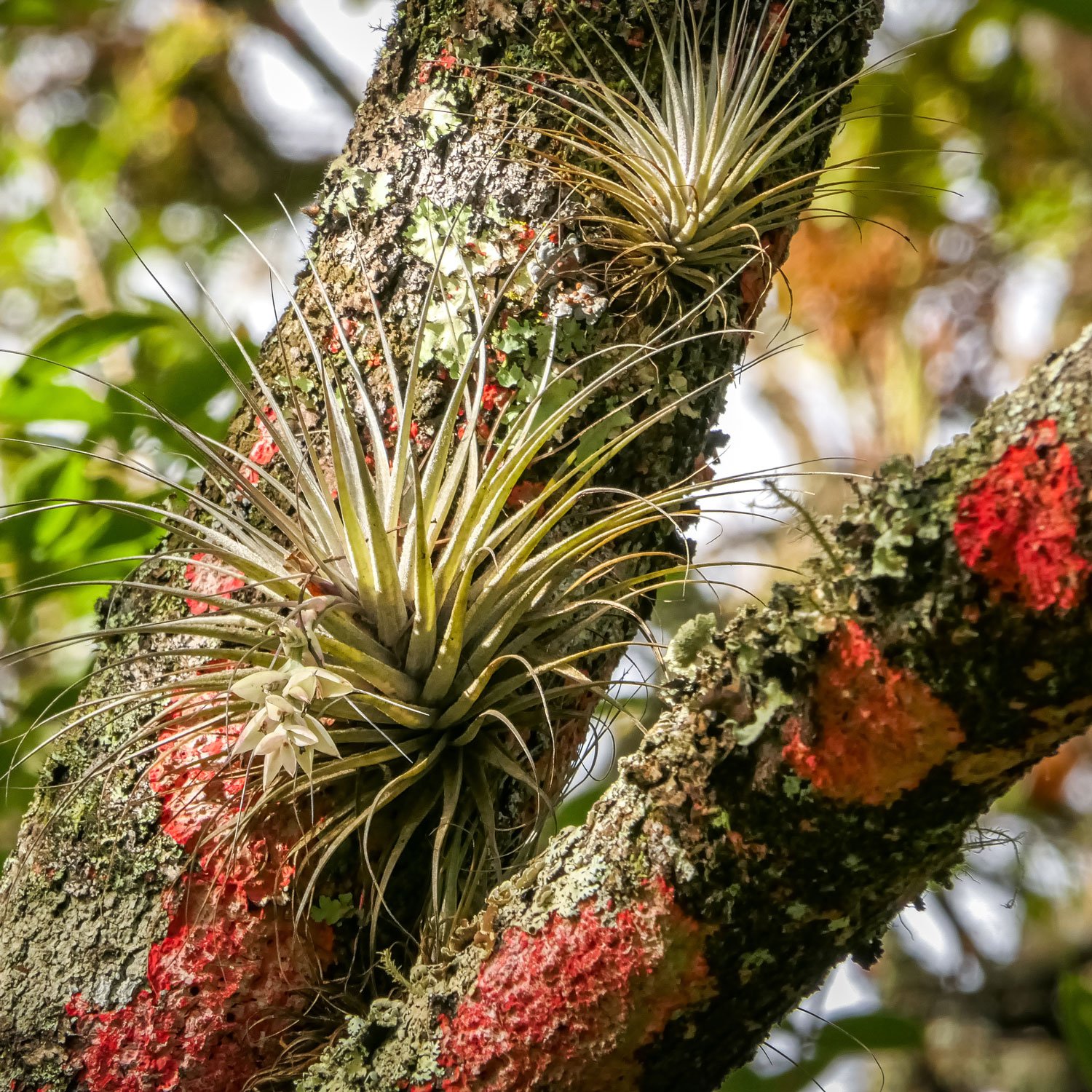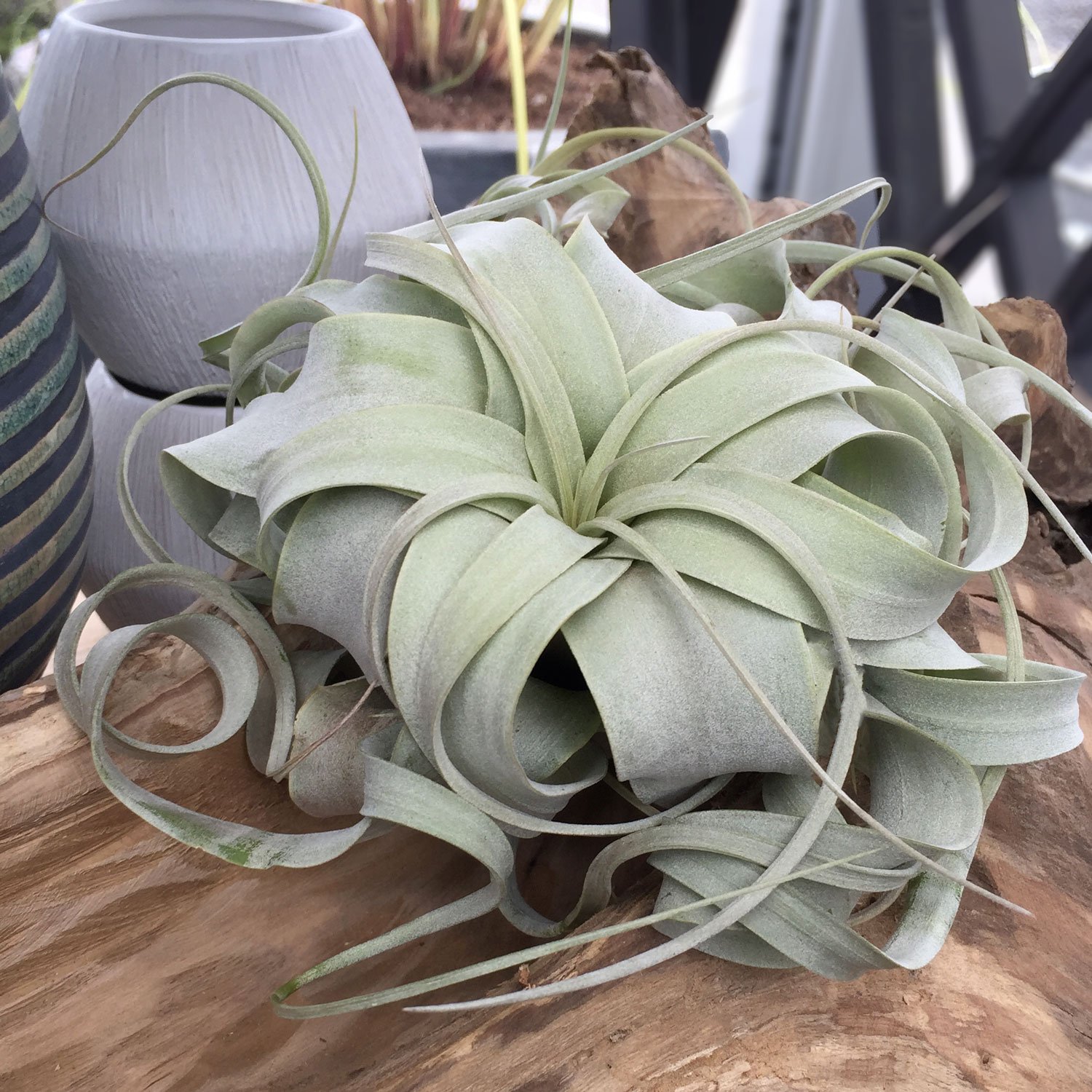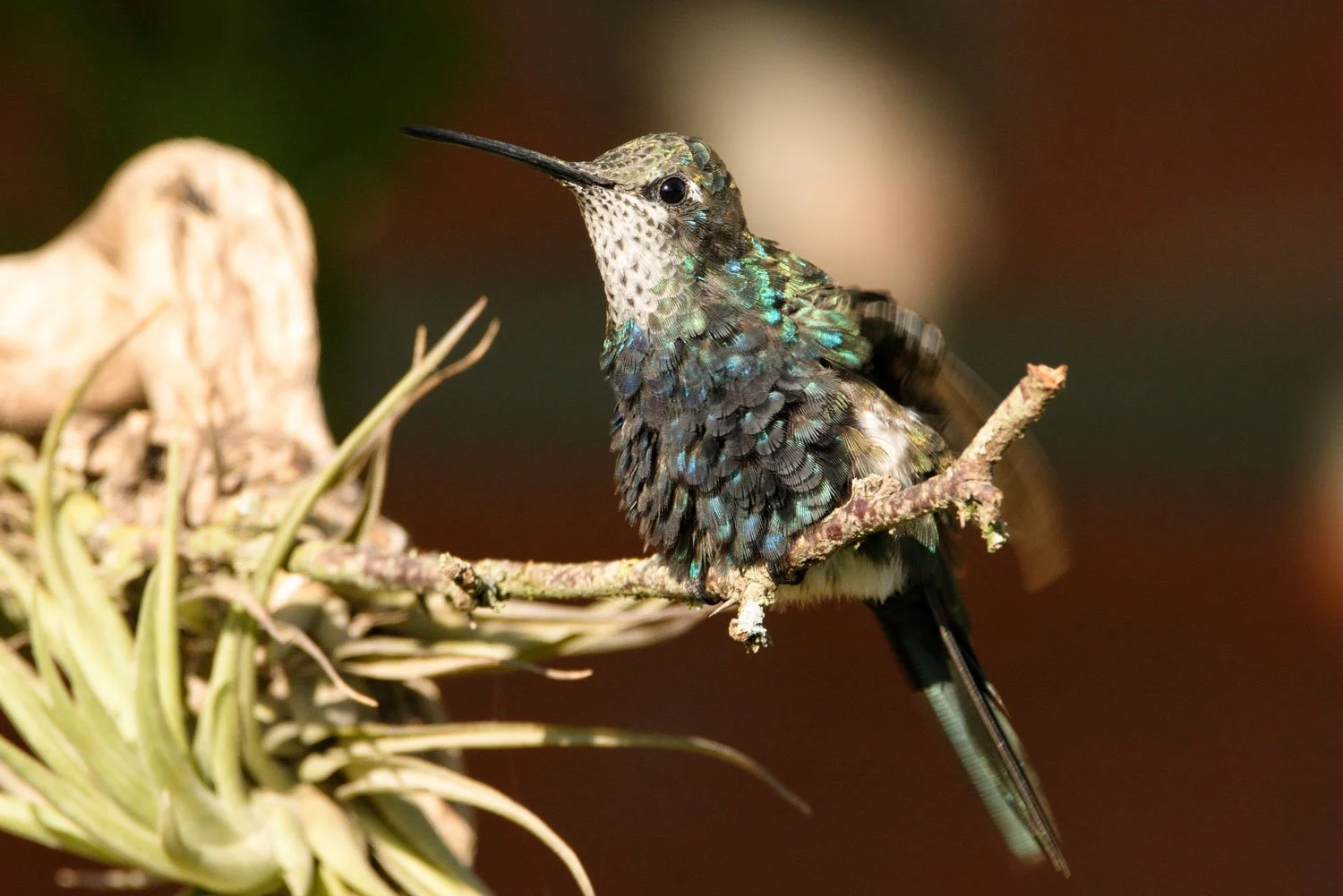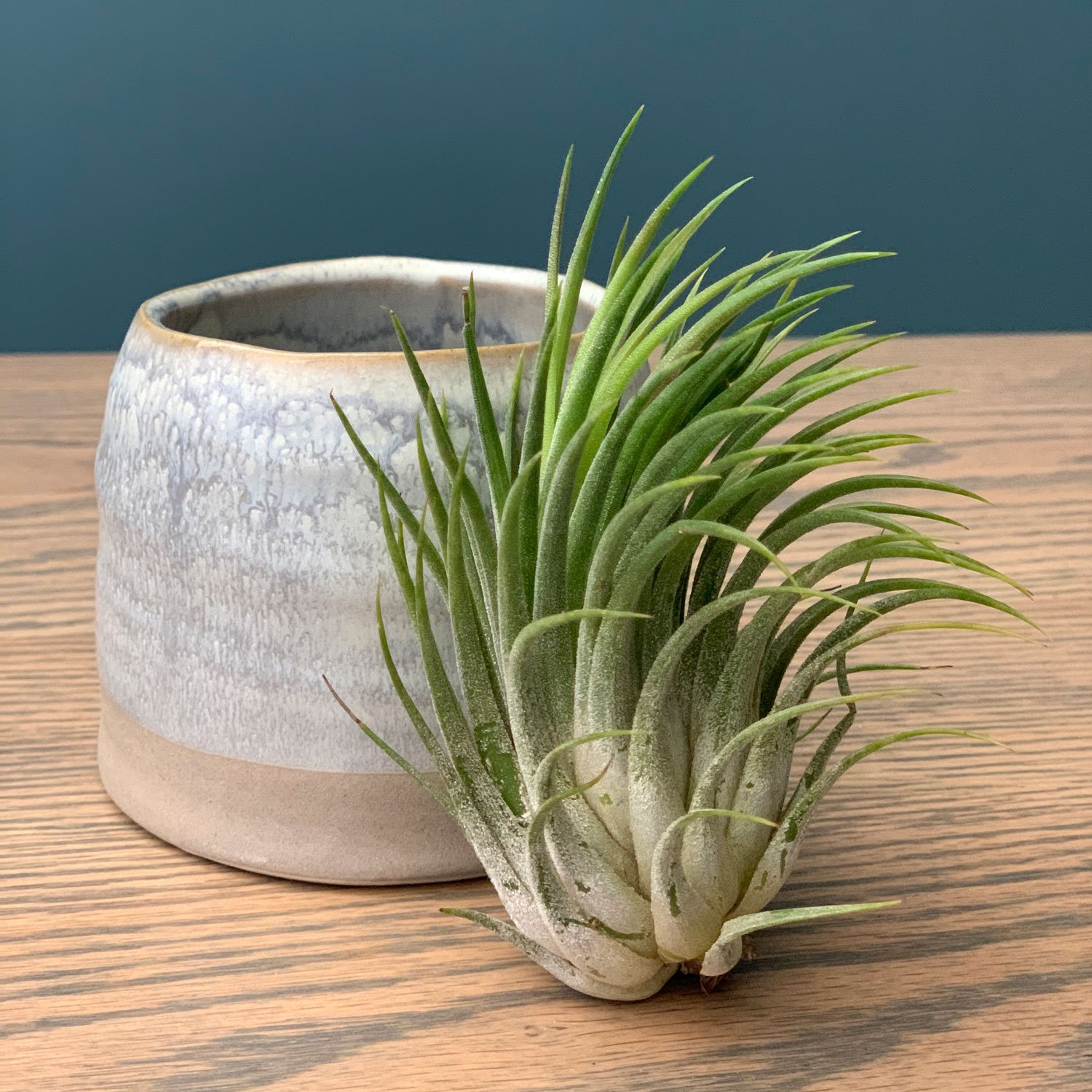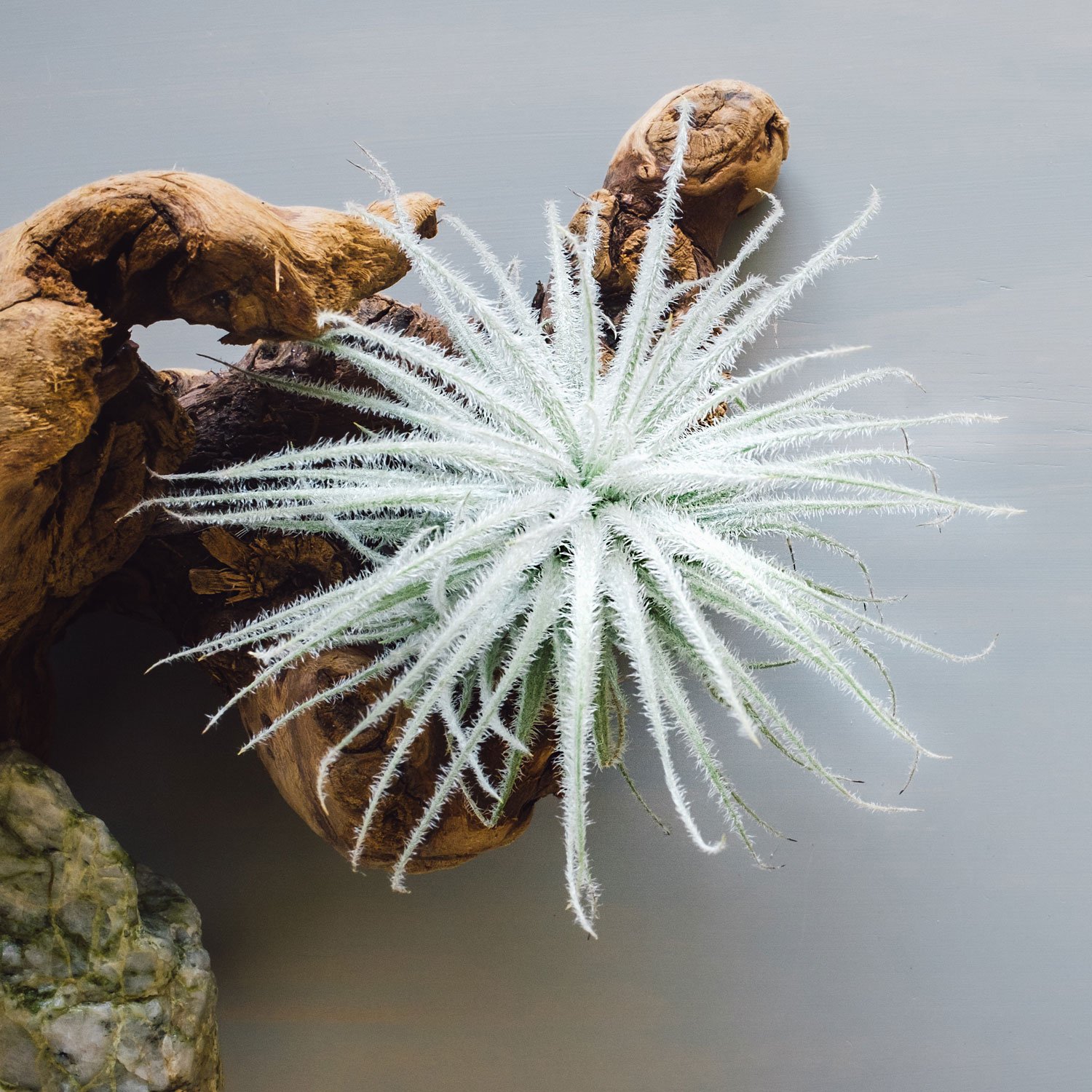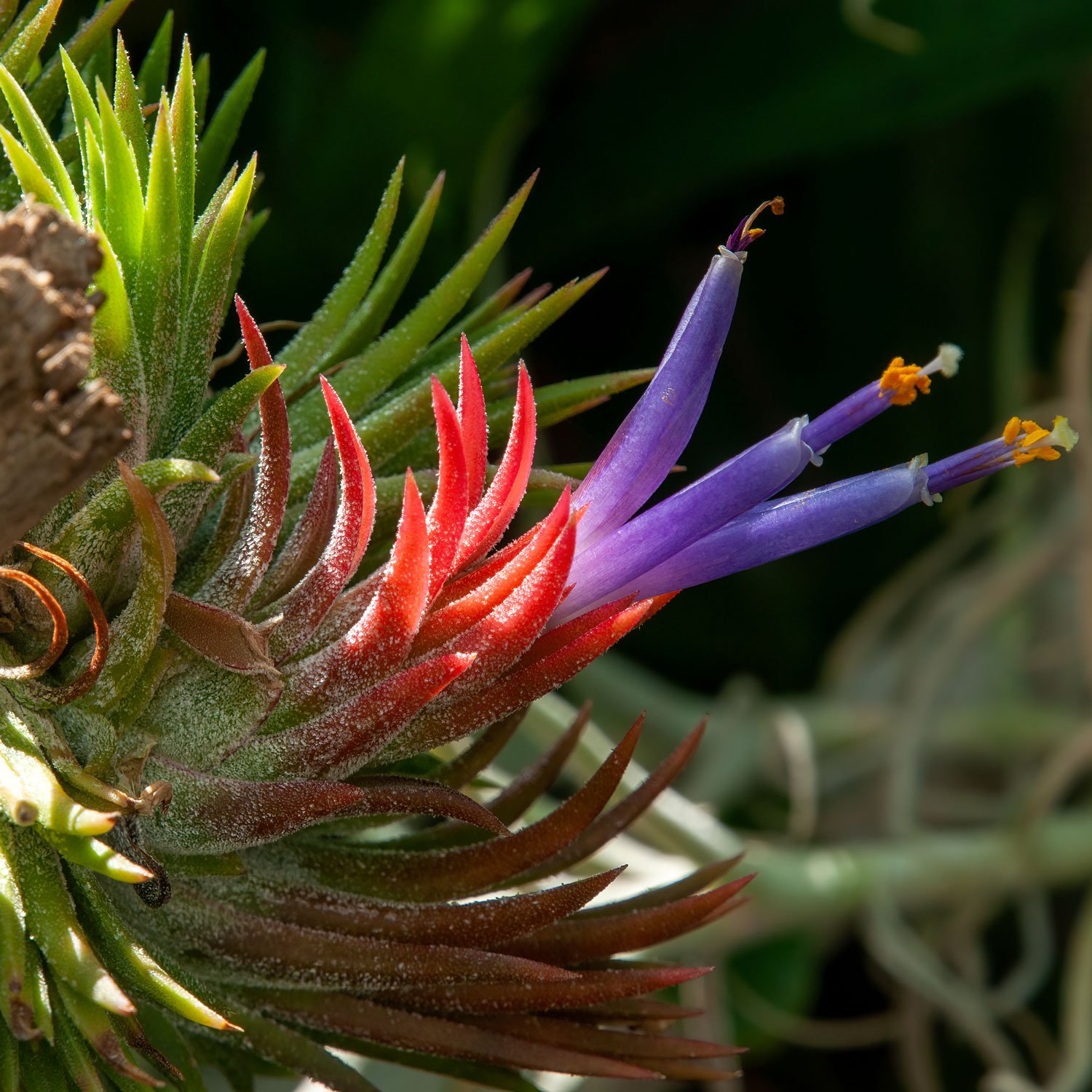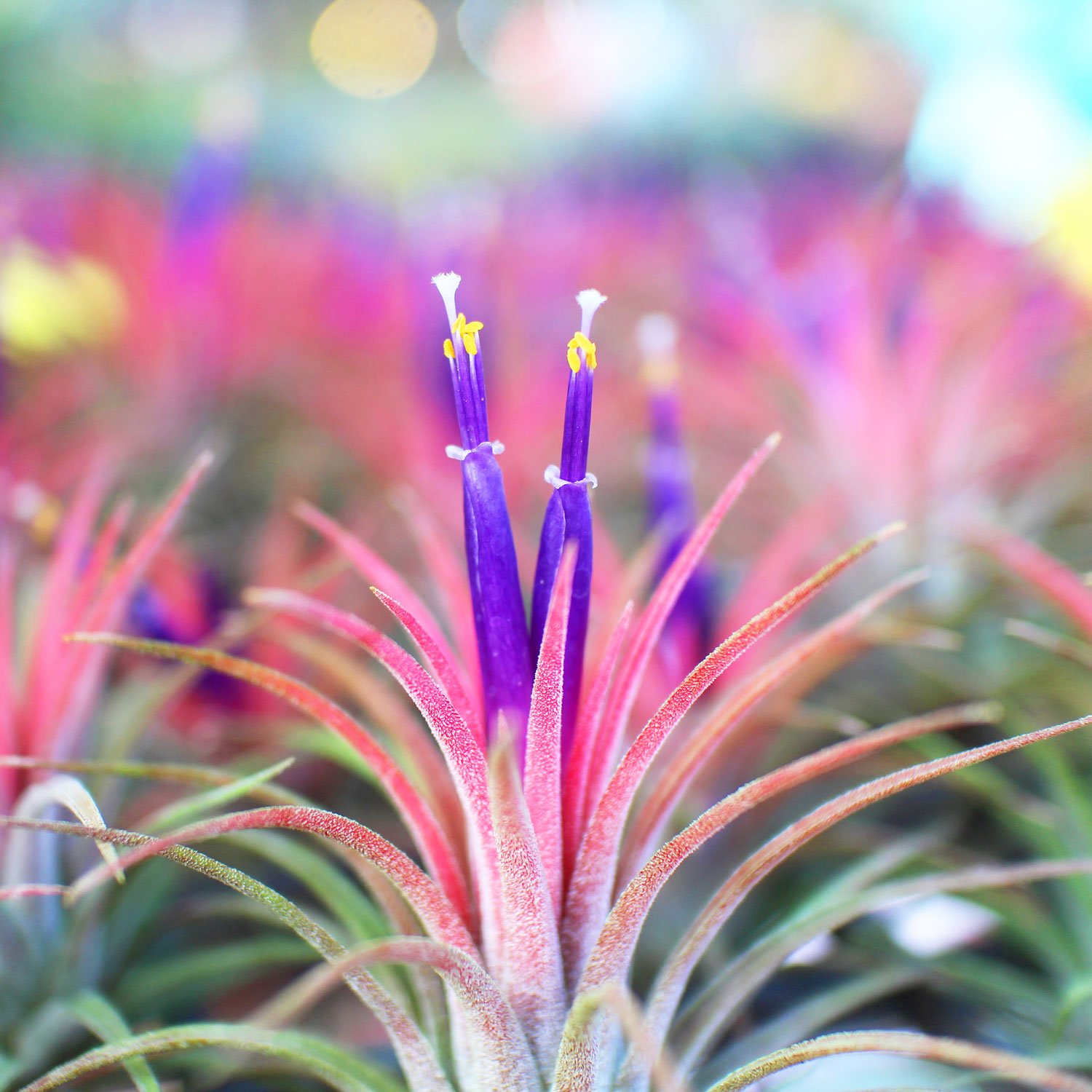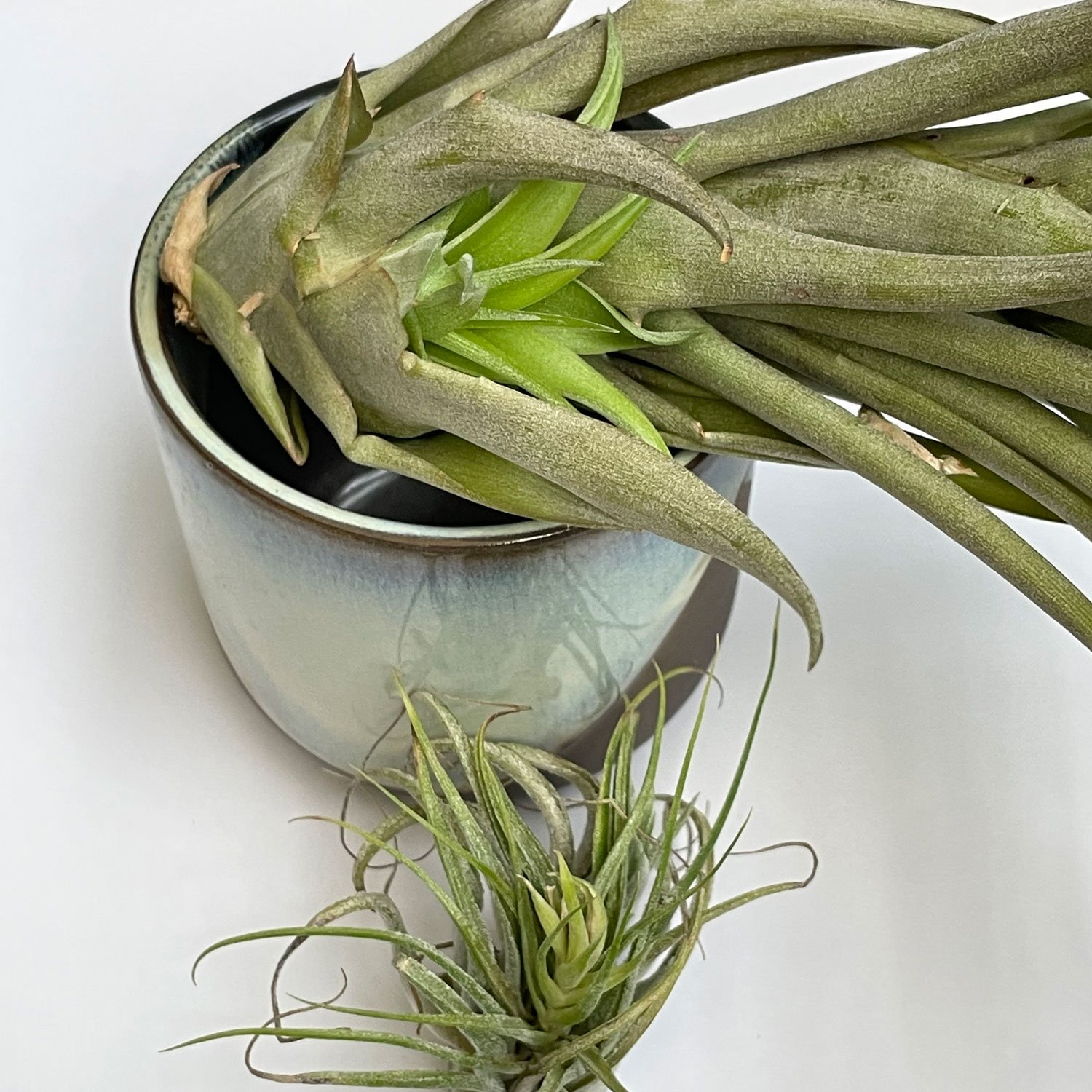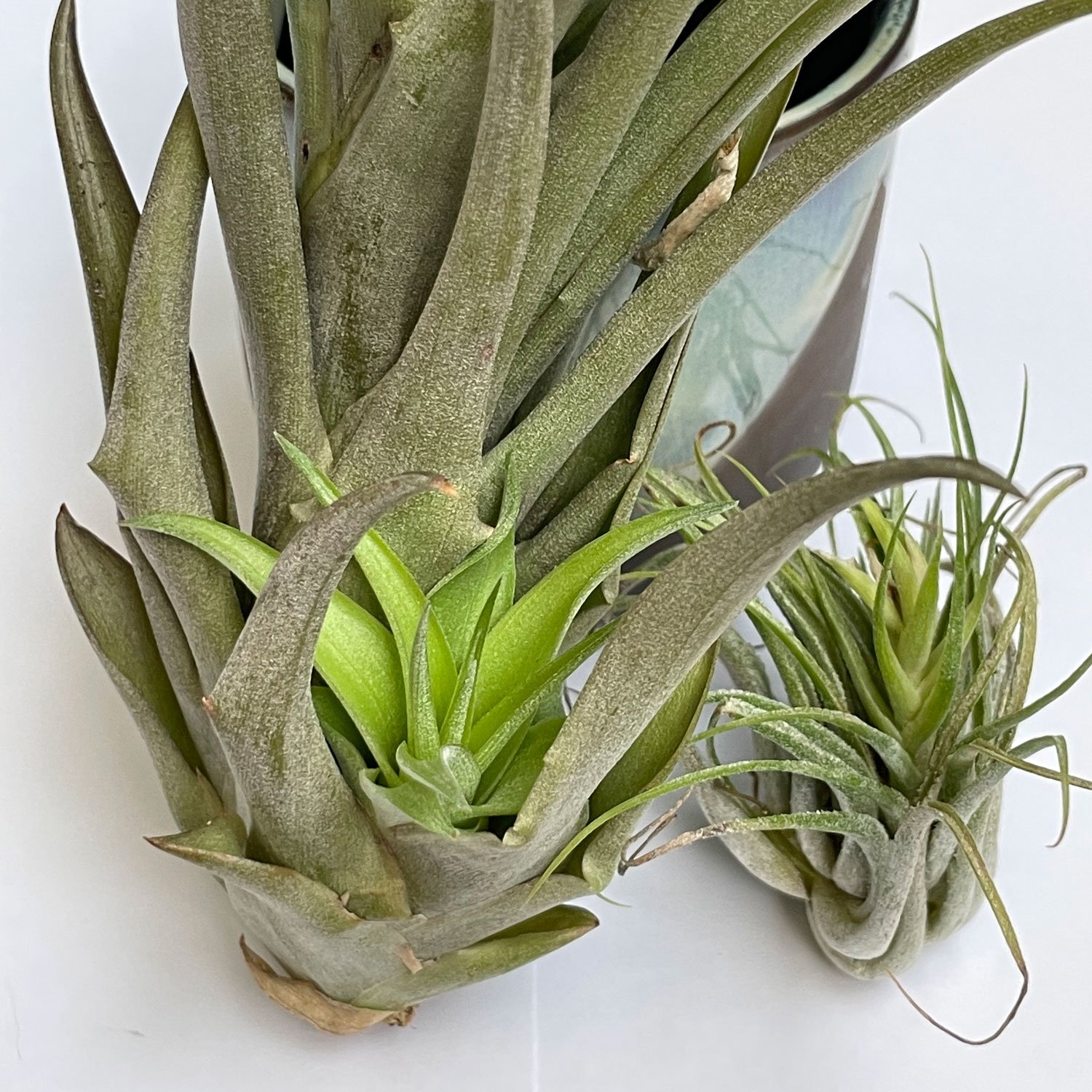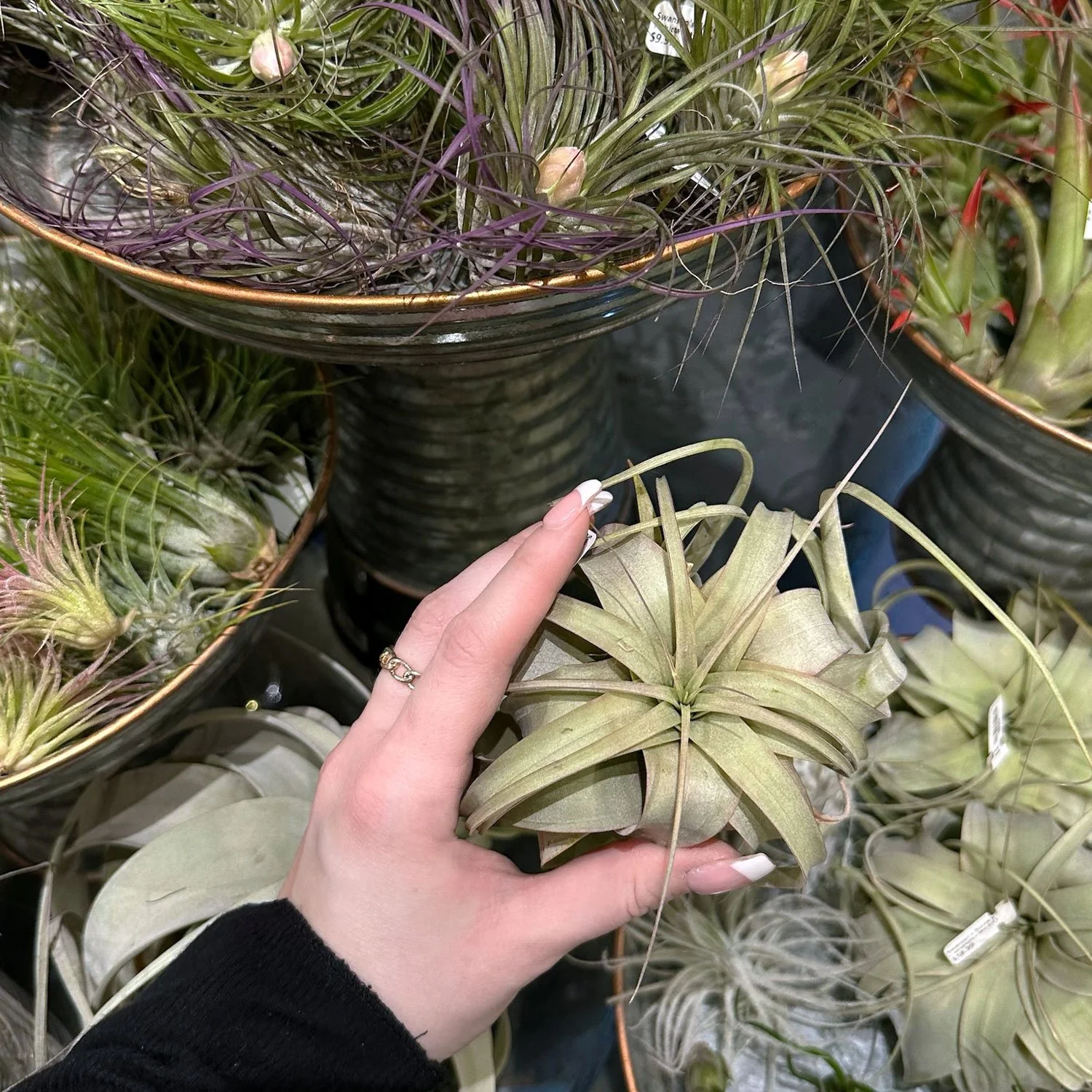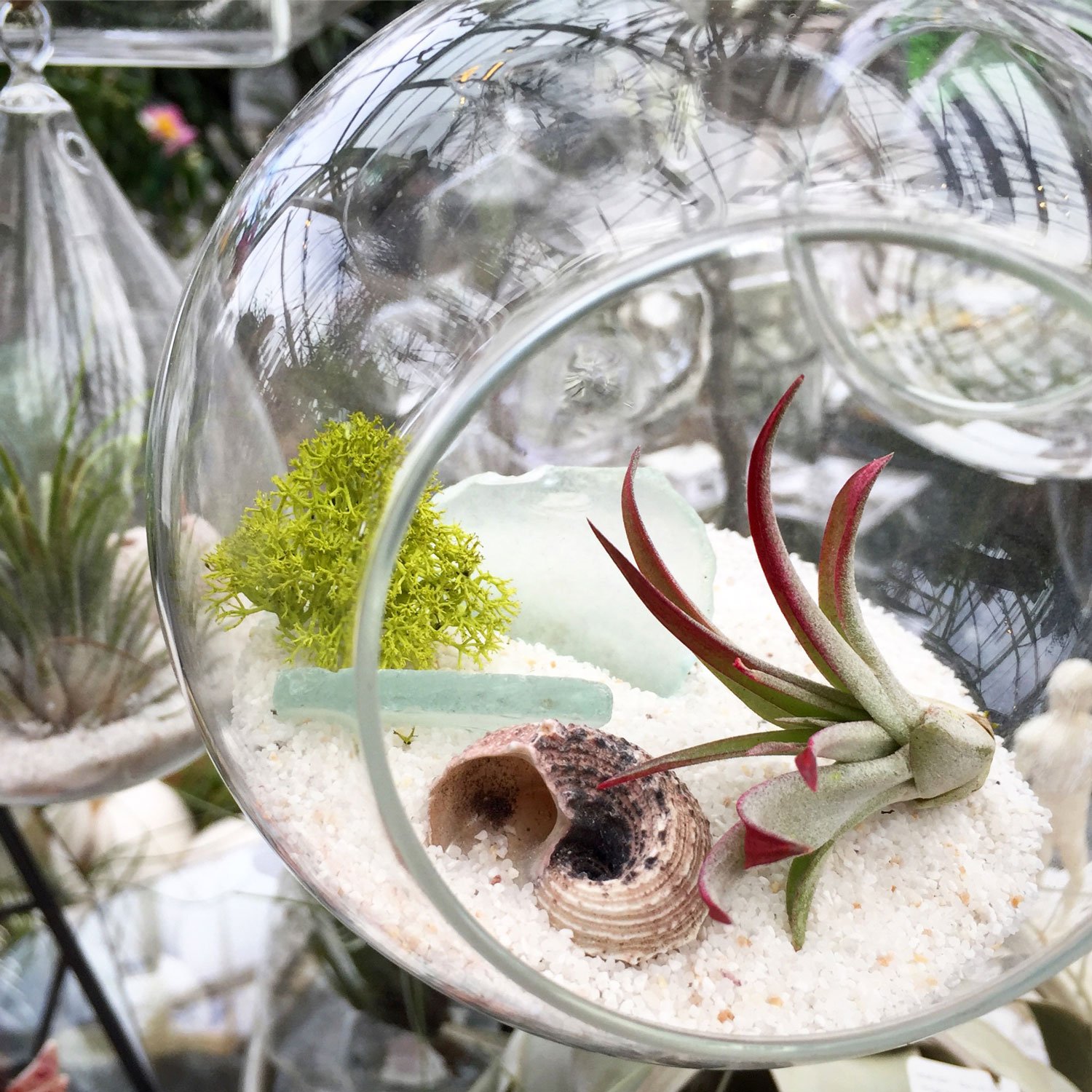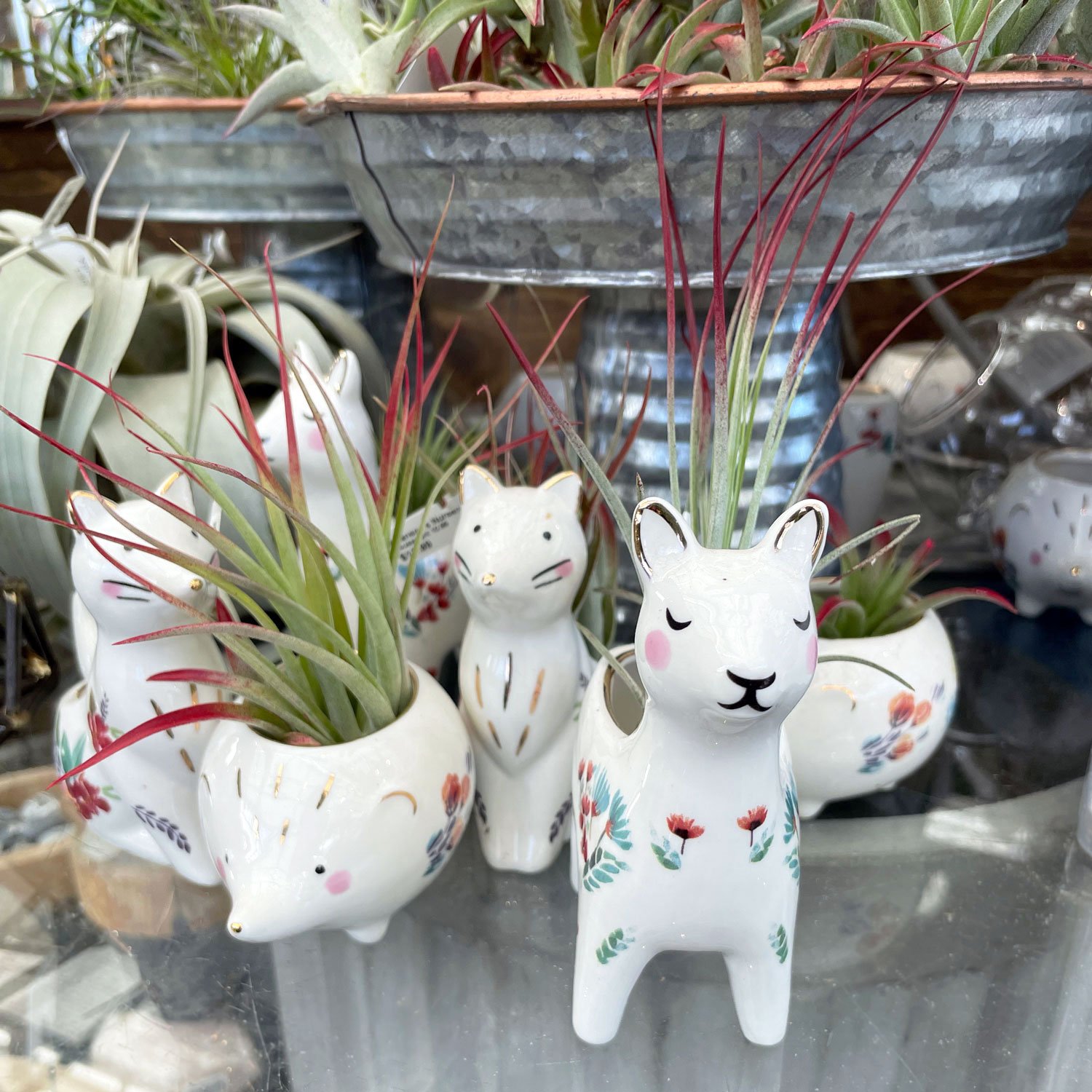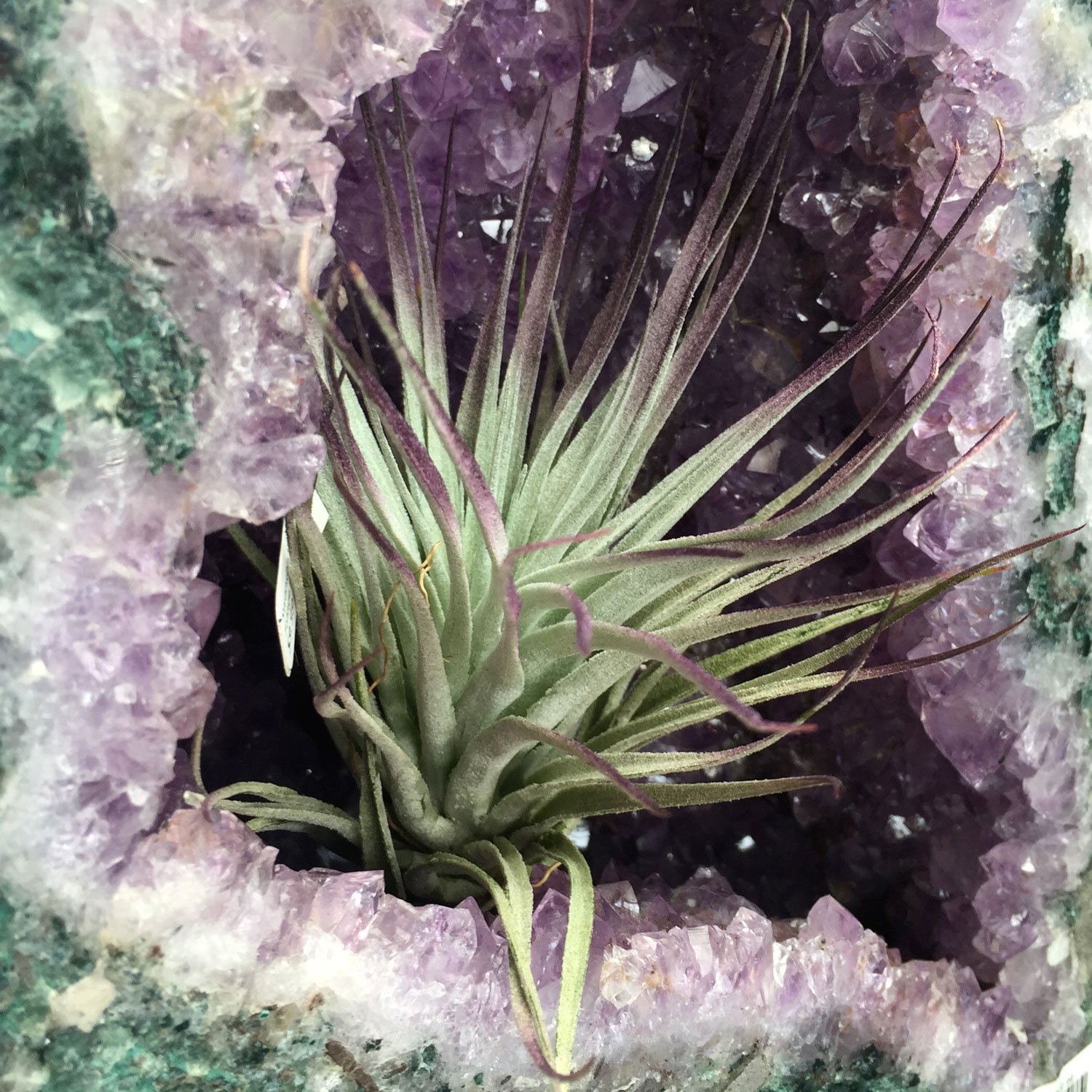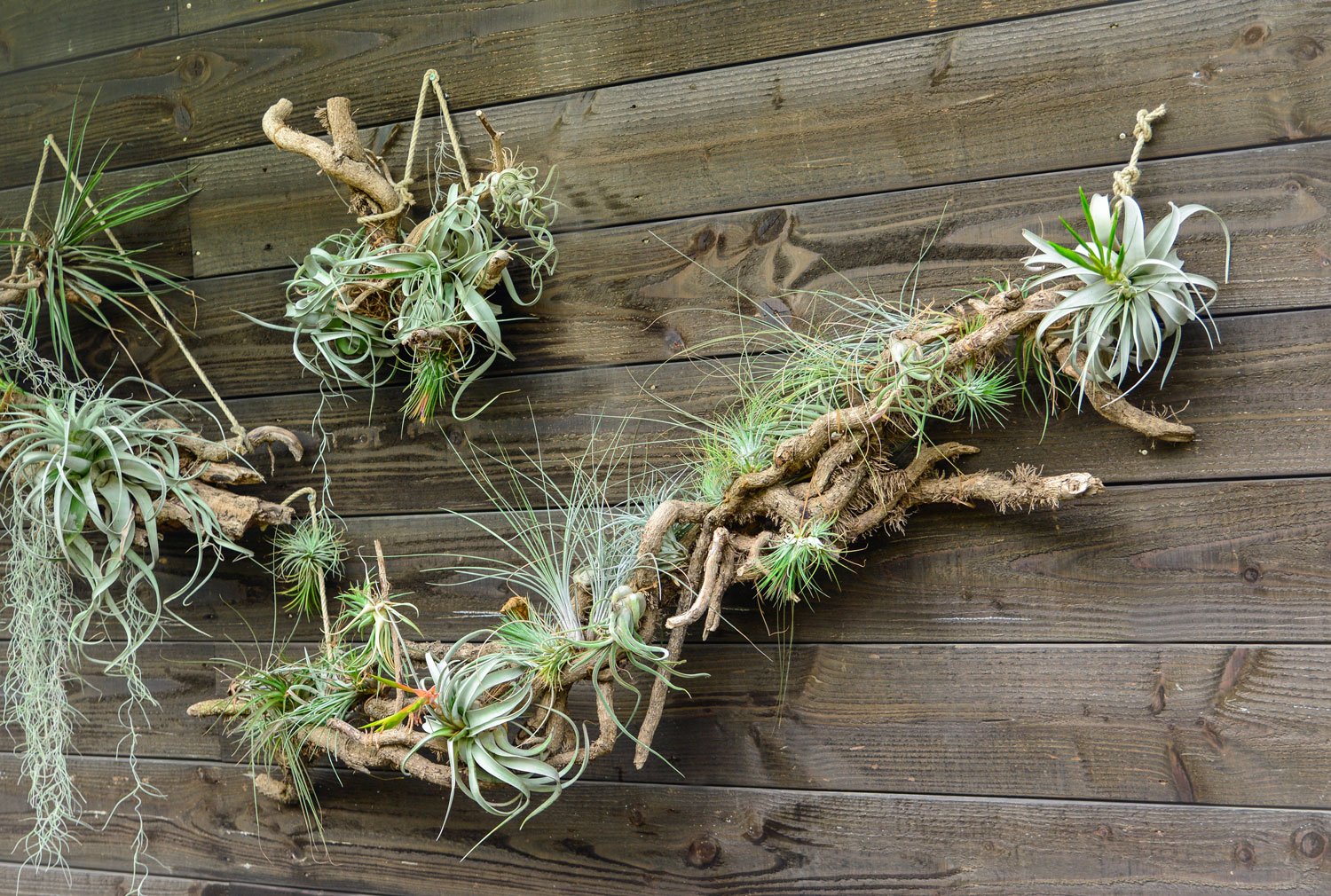Air plants are unique, ingenious, and fascinating. They follow their own quirky path, so it is no wonder that these marvels have such a devoted fan base. We get so many questions about them, so here are my best recommendations for air plant success.
What Are Air Plants?
Air plants, also called Tillandsia (the name of their Genus) are members of the Bromeliad family. They can range in size from a few inches across to nearly a foot across! Air plants are epiphytes and lithophytes; they may look like they have roots but they do not. Instead, air plants absorb water and nutrients through their leaves. Therefore, they don’t need soil to survive, and their root look-a-likes act only as anchors to their host plant or rock (if those tendrils fall off, not to worry. They don’t really need them in their human environment).
Origins of Air Plants
Air plants seem to have burst upon the scene in earnest about ten years ago, although they have been around since the 1970’s. In fact, they originated 15 million years ago during the geologic formation of the Andes Mountains in South America.
They have evolved in sync with one of their pollinators, the mighty Hummingbird. So, some respect, please, for these seemingly small and fragile life forms. They have figured some stuff out!
Choosing Your Air Plant
When trying to choose from the myriad available varieties of air plants, and successfully care for them, a few things are helpful:
Decide which type of air plant works best for you
Understand your lighting conditions and where to place your plants
Learn how to water and fertilize them effectively
Choose the best way to display your air plants
Types of Air Plants
Air plants originate from two distinct environments: mesic and xeric. Which type of plant you choose will dictate how much light they need and how often to water them - super important!
Luckily, it is fairly easy to distinguish between the two types:
Mesic types originate from a moderate-moisture environment. They are smoother, shinier, and greener.
Xeric types originate from a dry-air environment. They are fuzzier, dull, and greyish-green to grey. Fun fact: silvery coating helps reflect sunlight and keep the leaves cooler!
Mesic air plants need bright, indirect light and more moisture while Xeric air plants can tolerate direct morning sun and need to be watered less often.
Light Needs
All air plants like bright, indirect light but xeric plants can also tolerate direct morning sun. A south-, west- or bright east-facing window is the best.
Place them no more than 5 feet away from the light source, adjusting the difference depending upon “how bright” your actual light is. For instance, is your south-facing window unobstructed, or do you have trees, a building, blinds, or eaves partially blocking the light? If the latter, then place them closer to the window.
Note: If you use artificial light, the “daylight length” should be 12 hours.
How to Water Air Plants
Since air plants are epiphytes and lithophytes, they hydrate through their leaves. You can choose whether to mist them frequently or soak them less frequently. I’ll explain more below.
“How often should I water my air plants?” This is our most asked question, and our answer is: it depends upon the type of plant you have and the amount of light it receives… just like watering your other houseplants!
Here is the easiest way to decide what’s best for your air plant: follow the mesic/xeric rule: mesic plants need more moisture more often while xeric plants are more drought tolerant, needing water less often.
So, with a mesic plant, misting every other day is a good practice (if that is too much work, a 20-minute soak twice per week should suffice). For a xeric plant, soak once a week for 20 minutes.
Of course, how much water a plant needs will still depend on temperature and light. If light and temperatures are higher, water more frequently.
A general rule for both types: after hydrating, hold your plant upside down and shake it gently, then place it upside down on an absorbent surface to dry. If water is allowed to collect in the base, your air plants may eventually rot.
This is also why we recommend not arranging the two different types together and then watering the group in the same way. The Xeric plants will always get over-watered and the Mesic plants under-watered.
I won’t go into the complex structure of each leaf’s outer cells - the cells that regulate oxygen, carbon, and carbohydrates - but it is the reason the plant grows so slowly. It’s also the reason you shouldn’t water them late in the day because it will prevent the leaves from making a crucial nightly chemical exchange.
If you really want to geek out and take a deep dive into the geologic history and botany of air plants, visit this site.
Does the Type of the Water Matter?
Fortunately, here in Seattle, we have very high-quality drinking water from our two river sources: the Tolt and the Cedar. So, you can use tap water. However, the county does chlorinate, which can be harsh to the Tillandsia leaves, so if you don’t have a filtration system, fill your water container the night before and leave it open on the counter. The chlorine will naturally off-gas overnight.
Fertilizing Air Plants
All plants respond to fertilizer. For air plants, it is not as critical to fertilize, but it will support flowering and pup formation, which helps your plant have a longer life.
If your plant displays any of these traits, fertilizer could be the answer:
The plant’s foliage looks pale and weak
Leaves look yellow, and veins look darker
No new growth during the growing seasons
Small spots on leaves that grow with time
Mature leaves turn purple at the base
Use a fertilizer that is specifically formulated for Bromeliads and follow the directions on the label, or you can use a balanced liquid fertilizer (10-10-10) at ½ strength. Fertilize from April through September (the same period when you would fertilize most houseplants).
Air Plant Flowers
Air plants can have beautiful, brightly colored flowers that, in their natural environment, attract hummingbirds, moths, and even bats. Flowering time varies greatly between varieties and yes, flowering does signal the demise of the mother plant. But give it time and keep a lookout because multiple new plants called “pups” should begin to grow tucked inside the bottom sets of leaves.
A signal that flowering is imminent is when the topmost leaves take on a blush of pink/red color. This is also a good time to fertilize to support a hearty pup production. After the flower fades, you can safely snip it off.
For those who love propagating, let the pups grow until they are about 1/3 the mass of the mother plant before gently dislodging them. However, if you leave them in place, a beautiful new colony of “brothers & sisters” will form.
Air Plant Pests
The excellent news is that air plants rarely attract pests. There have been reports of scale or mealybugs, but these are easily dispatched with a drop or 2 of dish soap added to a spray bottle. As with all houseplants, paying close attention and catching the infestation in its early stages is the key to success. Learn more about identifying and treating common houseplant pests.
Displaying Air Plants
A plant that requires no soil or cache pot means you are free to get creative. What’s better than that? These days there seems to be an endless selection of funky, fun, and funny vessels you can use. You can display them in a glass sphere or even perch an air plant on another houseplant. So, go for it!
Your only guidelines are:
Don’t place your air plants on or in anything that retains moisture (think fabric, sand, moss). This is even more important if you hydrate them “in place.” Moisture will accumulate and rot the plant from the base.
We also recommend that you don’t glue them in place, as this can be damaging to the leaves. However, this is commonly done and often the plant is just fine.
Otherwise, go crazy, and be sure to tag us on Instagram so we can see your creative designs.
As always, we love and depend upon hearing about the experiences of our customers, so please feel free to share your questions and experiences by emailing us, reaching out on social media, or talking to our indoor living team the next time you visit!


